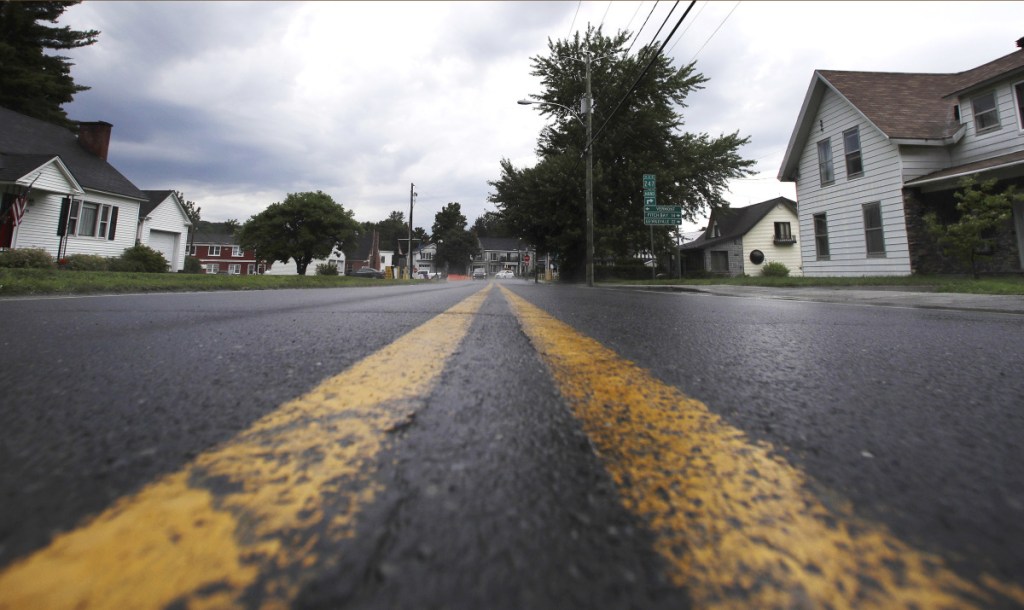MONTPELIER, Vt. — Some of the residents of a residential Vermont street that is split lengthwise by the Canadian border are irked by what they feel is the latest indignity imposed on them by U.S. border officials who they feel continue to make it harder for them to reach their homes.
But officials with U.S. Customs and Border Protection say that narrowing the entry to the United States from Canada is needed to prevent people from running the border without stopping. It’s all part of a broader effort to ensure they know who is entering the United States from Canada.
The officials say they are doing everything they can to minimize disruptions for the people in the 14 Vermont homes whose across-the-street neighbors live in Canada, but they acknowledge the difficulty of the change.
Earlier this year, U.S. officials installed orange Jersey barriers to block much of the crossing between the two countries on what had been the wide-open north-south street that leads from one country to the other. Now they are finishing construction on what they call a “hydraulic barrier” that, when up, will block the crossing completely except for the lane that goes under the canopy of the border post.
“They’ve been a real pain for most of the summer,” said Canusa Avenue resident Pat Boisvert, 77, who has lived in the neighborhood his entire life.
U.S. officials are planning a meeting for later this month with the people who live on the street in hopes of winning their understanding, if not their happiness with the extra hoop they are being forced to go through.
“We are not trying to make this difficult for anybody in the community,” said CBP spokeswoman Stephanie Malin. “We want to preserve the integrity of this being a cross-border community, but there are elements we need to do from a security standpoint to ensure that we are protecting the entire nation.”
Over the summer Boisvert said he’s been annoyed because a lane he has used to get home has frequently been blocked by cars waiting to enter Canada, although he says it has improved lately. He says the only notice they received of the change was a handout.
On the east-west Canusa Avenue, which intersects with the north-south road that is blocked by the new barriers, the border is located approximately on the double yellow line that breaks the street into two lanes.
Most access to the street is from Canada, but U.S. residents have a working relationship with both U.S. and Canadian officials who, mostly, recognize them and work to make it as easy as possible for people to reach their homes.
Vermonters who live on Canusa Avenue have grown accustomed to nodding at U.S. border agents when passing south through the official port of entry, but they do not formally enter the United States. When they head to their Vermont homes from the south they have always driven around the U.S. border post without stopping until they get into their driveways.
Now with the street narrowed, traffic on the U.S. side is funneled through a single lane that is frequently blocked by vehicles waiting to proceed to the Canadian port of entry across Canusa Avenue in Stanstead, Quebec.
“It’s the whole accumulated crap,” Boisvert said of what he sees as just the latest indignity for Vermonters who live on Canusa Avenue. “I will say, I think things have gotten noticeably worse in the last few years.”
He says sometimes people don’t want to visit, it can be hard to do business from home and it’s difficult for people to sell their homes.
Canusa Avenue in the Beebe Plain neighborhood of Derby is believed to be unique on the 5,525-mile U.S.-Canadian border. The homes on the north side of the street are in Vermont while while their neighbors on the other side of the street are in Quebec.
“My perspective is seriously tainted by the good-old days because, back then, growing up there was nothing here,” Boisvert said. “It was an invisible border. You ran across the street a hundred times a day, which I used to do.”
Send questions/comments to the editors.



Success. Please wait for the page to reload. If the page does not reload within 5 seconds, please refresh the page.
Enter your email and password to access comments.
Hi, to comment on stories you must . This profile is in addition to your subscription and website login.
Already have a commenting profile? .
Invalid username/password.
Please check your email to confirm and complete your registration.
Only subscribers are eligible to post comments. Please subscribe or login first for digital access. Here’s why.
Use the form below to reset your password. When you've submitted your account email, we will send an email with a reset code.